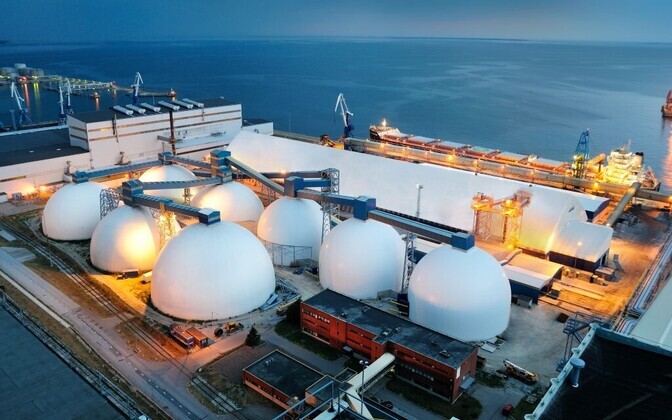Luminor Chief Economist Lenno Uusküla said there are surprising developments in Estonia’s export destination countries after Statistics Estonia reported September’s figures.
According to Statistics Estonia, in September, exports of goods increased by 4 percent and imports by 6 percent compared with September 2024. In the second and third quarter, the growth in foreign trade slowed down.
In September, Estonia’s exports of goods amounted to almost €1.6 billion and imports to nearly €1.9 billion at current prices. The trade deficit was €292 million, which is €46 million more than in September last year.
Jane Leppmets, foreign trade analyst at Statistics Estonia, said that foreign trade showed slower growth in the second and third quarter.
“Exports of goods grew by 14 percent in the first quarter but just by 4 percent in the next two quarters. The slower growth in both exports and imports was primarily due to decreased trade in mineral products. In the first nine months of 2025, exports of goods increased by 7 percent and imports by 8 percent in total,” she added.
The main commodities exported in September were electrical equipment (15 percent of Estonia’s total exports), agricultural products and food preparations (13 percent), wood and articles of wood (11 percent) and transport equipment (11 percent).
Estonia’s top export partner in September was Finland (16 percent of total exports), followed by Latvia (11 percent) and Sweden (10 percent).
In September, the top partner countries for Estonia’s imports of goods were Finland (13 percent of total imports), Germany (12 percent) and Latvia (11 percent).
Economist: Surprising developments in export destination countries
 Lenno Uusküla. Autor/allikas: Siim LõvI /ERR
Lenno Uusküla. Autor/allikas: Siim LõvI /ERR
Commenting on September’s figures, Luminor Chief Economist Lenno Uusküla said there are surprising developments in Estonia’s export destination countries.
Exports to Sweden, which had long been in decline, grew by 20 percent year-on-year in September. “It’s too early to say whether this is a lasting change. Growth has been of a similar scale in Poland, the United Kingdom, and Denmark,” Uusküla noted.
“Agricultural exports have seen strong growth over the year, up by as much as 22 percent. Since global food prices are high and demand is strong, this supports the export of Estonian food products,” he said.
“In the structure of Estonia’s exports, there is no clear indication that we are moving up the value chain and offering increasingly high-tech products to the world. Alongside goods exports, services exports are indeed growing, but there are few positive developments in manufacturing,” Uusküla added. “Even three years after the end of trade with Russia, there has been no clear positive shift.”
—
Follow ERR News on Facebook and Twitter and never miss an update!
